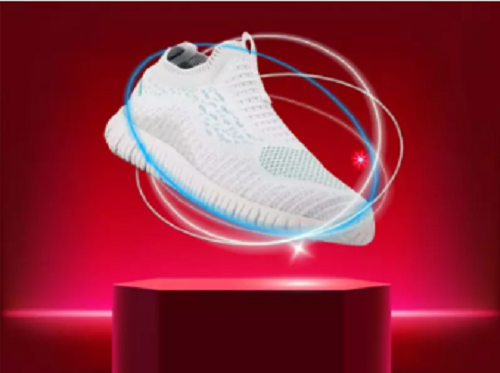
In the ever-changing marketing and advertising world, being ahead of the curve is critical for organizations looking to catch customer attention and drive engagement. As traditional advertising approaches become more crowded, new technologies are emerging to redefine how brands connect with their audiences. One example of cutting-edge technology is holographic display advertising. This futuristic strategy promises to transform the marketing industry by producing immersive and interactive experiences that attract viewers like never before. Here’s an in-depth look at how holographic display advertising is set to revolutionize the future of marketing.
Understanding Holographic Display Advertising
Holographic display advertising uses advanced holographic technology to produce three-dimensional graphics and animations that appear to float in midair. Unlike standard 2D panels, holographic displays provide a 360-degree perspective of the material, allowing users to see the image from various angles. This results in an unparalleled sense of depth and realism compared to traditional displays.
The technology behind holographic displays varies, but one of the most common and accessible types is the holographic fan display. These devices use fast spinning LED strips that generate light in exact patterns to create the illusion of a three-dimensional image. Other approaches include laser projection on specially built screens and the use of transparent LCD panels.
The Impact of Holographic Advertising
- Enhanced Visual Appeal: The most immediate and obvious benefit of holographic display advertising is its visual appeal. The dynamic, floating images are eye-catching and can easily grab the attention of passersby. This makes holographic displays particularly effective in high-traffic areas such as shopping malls, airports, and trade shows.
- Improved Engagement: Holographic displays are not just visually striking; they are also highly engaging. The three-dimensional aspect of the images allows for more interactive content. For instance, consumers can walk around the display to view the product from different angles or even interact with the hologram using gestures or touch.
- Memorable Experiences: One of the key challenges in marketing is creating memorable experiences that leave a lasting impression. Holographic displays excel in this area by offering a unique and futuristic experience that consumers are likely to remember and talk about. This can lead to increased word-of-mouth marketing and social media shares.
- Versatility in Applications: Holographic advertising is incredibly versatile and can be used in various contexts. From product launches and brand activations to retail displays and corporate presentations, the applications are endless. This versatility allows brands to integrate holographic displays into their marketing strategies in multiple ways.
Real-World Applications of Holographic Display Advertising
- Retail Environments: In retail settings, holographic displays can showcase products in a compelling way. For example, a fashion retailer might use a holographic mannequin to display clothing items, allowing shoppers to see how the clothes look on a moving model. This can enhance the shopping experience and drive sales.
- Trade Shows and Exhibitions: Trade shows are highly competitive environments where brands vie for the attention of attendees. Holographic displays can help brands stand out by creating captivating presentations that draw people to their booths. They can be used to demonstrate products, explain complex concepts, or simply entertain.
- Events and Concerts: In the entertainment industry, holographic displays can be used to create stunning visual effects at events and concerts. From holographic performances by virtual artists to interactive stage designs, the possibilities are endless. This can enhance the overall experience for attendees and create buzz around the event.
- Corporate Settings: In corporate settings, holographic displays can be used for presentations, training sessions, and conferences. They can help make complex information more understandable and engaging, leading to better retention and comprehension.
Challenges and Considerations
While the potential of hologram for advertising is immense, there are several challenges and considerations to keep in mind:
- Cost: The initial cost of acquiring and setting up holographic displays can be high. However, as the technology becomes more mainstream, prices are expected to decrease. Brands need to weigh the cost against the potential benefits and return on investment.
- Technical Expertise: Creating effective holographic content requires a certain level of technical expertise. Brands may need to invest in training or hire specialized personnel to manage the technology. This includes content creation, display setup, and maintenance.
- Environmental Factors: Holographic displays can be affected by environmental factors such as lighting and space. For instance, too much ambient light can reduce the visibility of the hologram. Brands need to carefully consider the placement and conditions of the display to ensure optimal performance.
- Content Quality: The effectiveness of holographic advertising largely depends on the quality of the content. Poorly designed holograms can look unprofessional and fail to engage the audience. Investing in high-quality content creation is essential for maximizing the impact of holographic displays.
The Future Outlook
The future of holographic display advertising appears optimistic, with technological developments likely to make it more accessible and compelling. As costs fall and technology improves, holographic displays will become more widely used in a variety of industries.
Furthermore, integrating holographic technology with other developing technologies like augmented reality (AR) and artificial intelligence (AI) has the potential to improve its capabilities even further. For example, AI may be used to generate personalized holographic adverts based on user data, and AR could enable even more participatory and immersive encounters.
Holographic display advertising is a huge step forward in the way marketers interact with their audiences. Its ability to generate visually attractive, interactive, and memorable experiences makes it an effective tool in the modern marketer’s toolbox. As technology advances, holographic displays will play an increasingly crucial part in the future of marketing, revolutionizing how firms interact and connect with customers. By embracing this cutting-edge technology, brands can stay ahead of the competition and leave a memorable impression.










